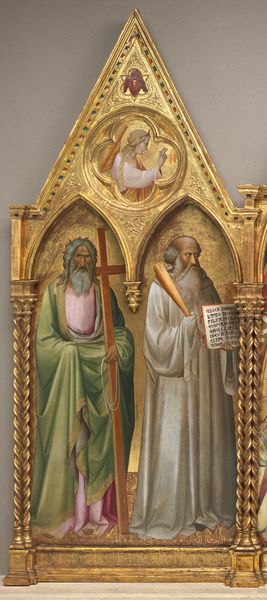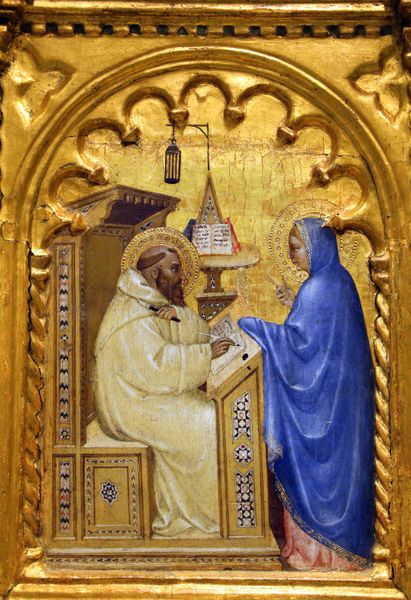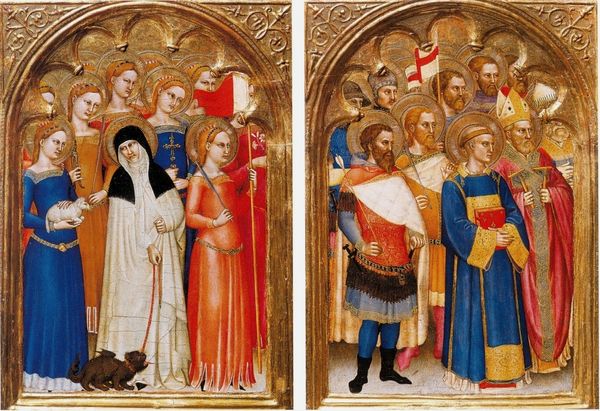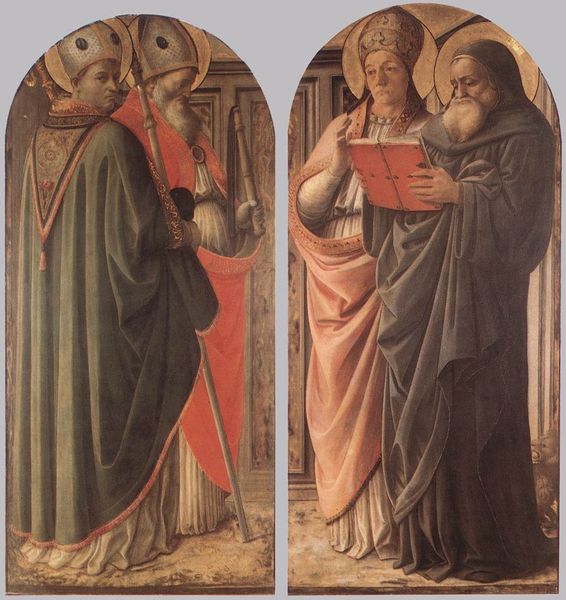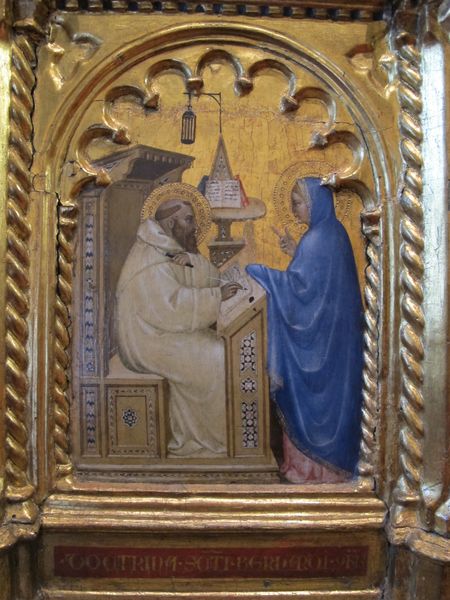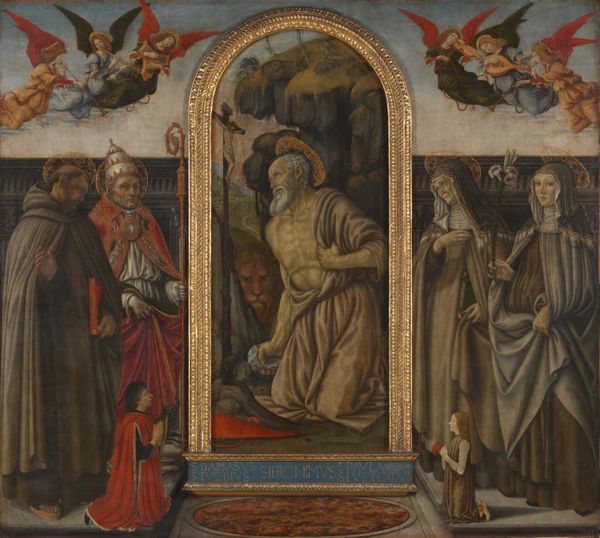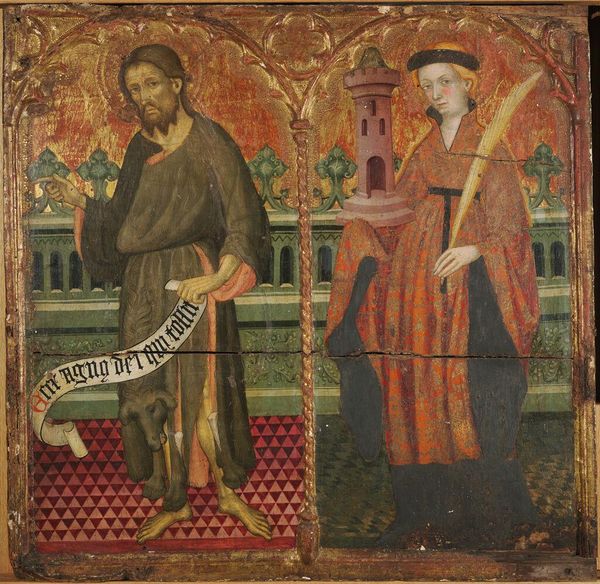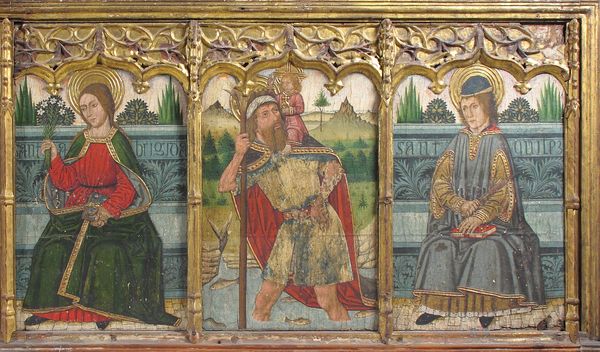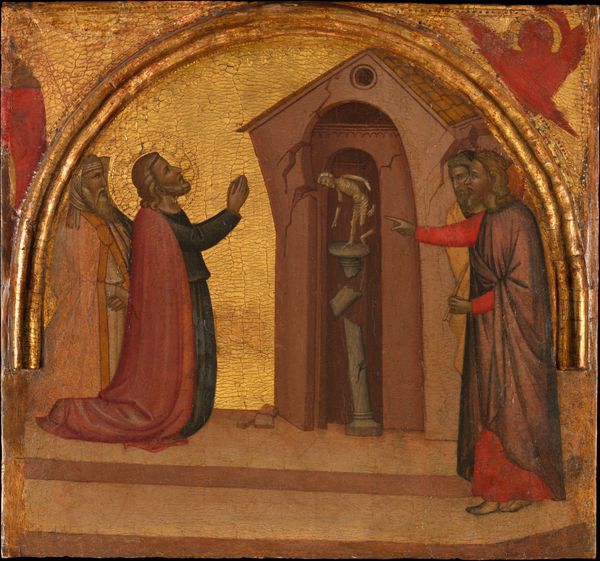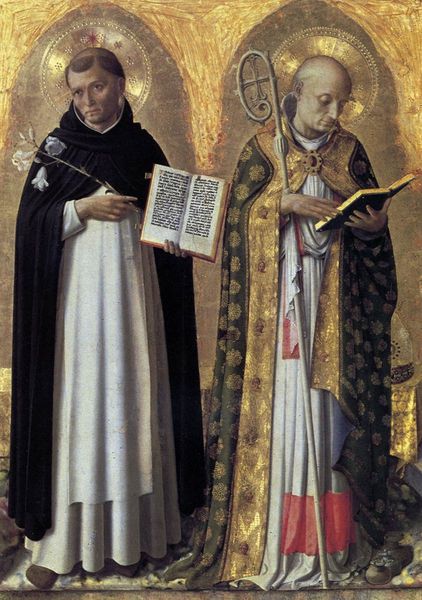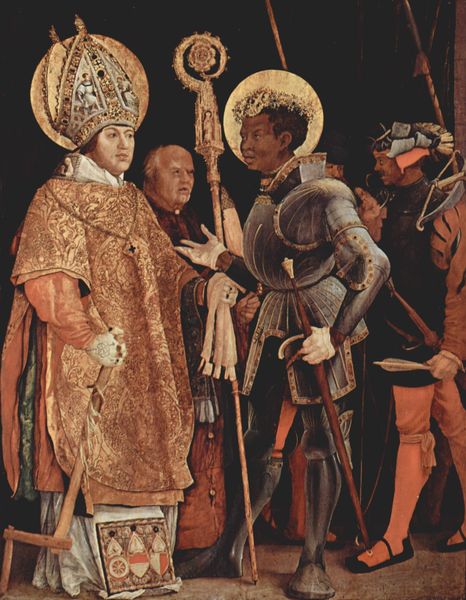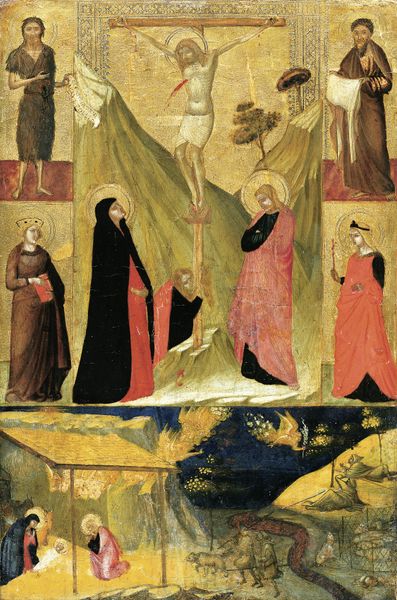![Saint Bernard and Saint Catherine of Alexandria with the Virgin of the Annunciation [right panel] by Agnolo Gaddi](/_next/image?url=https%3A%2F%2Fd2w8kbdekdi1gv.cloudfront.net%2FeyJidWNrZXQiOiAiYXJ0ZXJhLWltYWdlcy1idWNrZXQiLCAia2V5IjogImFydHdvcmtzL2JmMDNiMWQzLTI4Y2ItNGMwYi04ZTlmLWNhMzU5M2VhMjg0My9iZjAzYjFkMy0yOGNiLTRjMGItOGU5Zi1jYTM1OTNlYTI4NDNfZnVsbC5qcGciLCAiZWRpdHMiOiB7InJlc2l6ZSI6IHsid2lkdGgiOiAxOTIwLCAiaGVpZ2h0IjogMTkyMCwgImZpdCI6ICJpbnNpZGUifX19&w=3840&q=75)
Saint Bernard and Saint Catherine of Alexandria with the Virgin of the Annunciation [right panel] before 1387
0:00
0:00
panel, tempera, painting
#
panel
#
tempera
#
painting
#
traditional architecture
#
oil painting
#
italian-renaissance
#
early-renaissance
Dimensions: overall: 194.6 × 80 cm (76 5/8 × 31 1/2 in.)
Copyright: National Gallery of Art: CC0 1.0
Curator: So, we’re looking at the right panel of a work entitled “Saint Bernard and Saint Catherine of Alexandria with the Virgin of the Annunciation,” a tempera on panel by Agnolo Gaddi, created before 1387, so very late 14th century. It's Italian Renaissance, early Renaissance. Editor: My first thought is, pink. Everything has this faded, rosy light to it, like viewing the world through rose-tinted spectacles, a softened almost dream-like effect. Curator: Absolutely. Tempera paint lends itself to that softened quality. We must consider the materials Gaddi would have used, pigments ground meticulously, the process of layering thin washes on a gessoed panel. These processes are so crucial in dictating the final product and the distribution of these panels across the churches within Florence, Italy. Editor: Yes, but it also strikes me as somewhat stiff, like perfectly posed figurines. Is that intentional? A reflection of the spiritual rigidity of the time perhaps? The figures stand with halos, holding books or palms... symbolic weights they carry effortlessly, while they appear calm. Curator: It’s very deliberate, the static poses and hierarchical scale were fairly standard at this time. Consider how the gilding draws our eye. It serves a dual purpose: visually enriching the piece, as well as reflecting light within the space in which it would be hung in Florence. Editor: I wonder what stories they are quietly holding inside... Or maybe it's a question of whose gaze matters—their gaze or the devotional gaze they were created to inspire in a 14th-century church-goer? Curator: The materials are absolutely the means to understand what types of devotional art objects would be commissioned to adorn domestic and religious spaces within the city. They show us, and viewers through history, the value systems within 14th century Florence. Editor: All that detail, yet the overall feeling is simplicity. I can get lost imagining myself back then, and how those materials impacted artistic trends. Curator: A beautiful distillation, yes, one of the ways that artistic visions and socio-economic factors combine to tell rich stories.
Comments
No comments
Be the first to comment and join the conversation on the ultimate creative platform.
